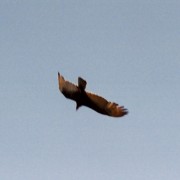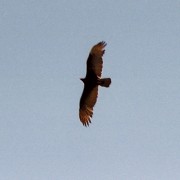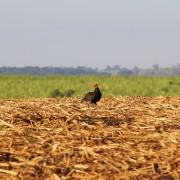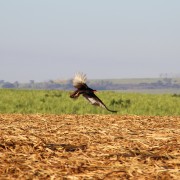Biodiversity
 Turkey vulture
Cathartes aura | Linnaeus, 1758
Turkey vulture
Cathartes aura | Linnaeus, 1758
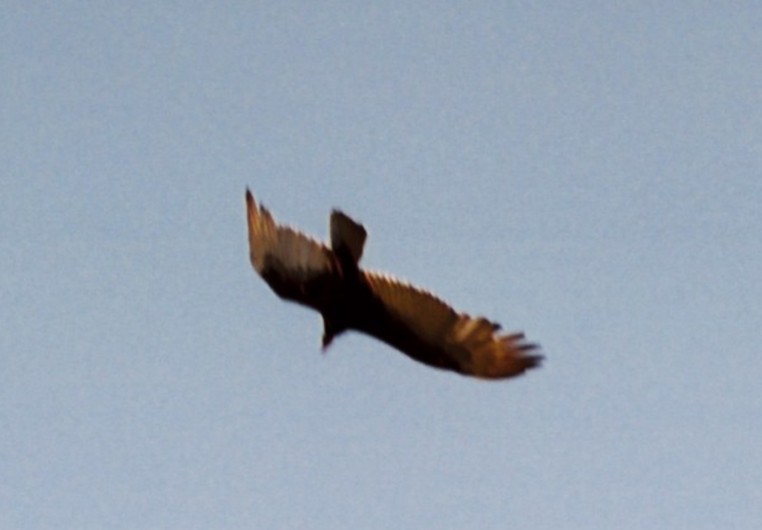
Characterization: Large species measuring about 65cm in length. It has a pinkish-red head and neck. The lower portion of its feathers it has a light gray color, contrasting with the rest of its body, which is black. Hatchlings have white plumages.
Distribution: Common nearly throughout Brazil.
Habitat: Fields and on the outskirts of forests.
Habits: A diurnal species, this bird is active early in the morning and still at dusk. It is often seen gliding for a long time, taking advantage of air currents, and it usually flies with its wings turned up forming a "V;" it also flies near the ground, looking for smaller pieces of carrion.
Diet: Carnivorous and essentially a scavenger, feeding on carrion.
Breeding: This bird lays 2-3 eggs in a well-hidden, hard-to-access place, usually among rocks and roots.
In the UFRA area: This bird species is considered infrequent, as it was only seen 6 times in all surveys conducted. It had a medium spatial distribution, being seen in the organic sugarcane fields, wetlands with herbaceous plants, wetlands with riparian forests, and native forests.




